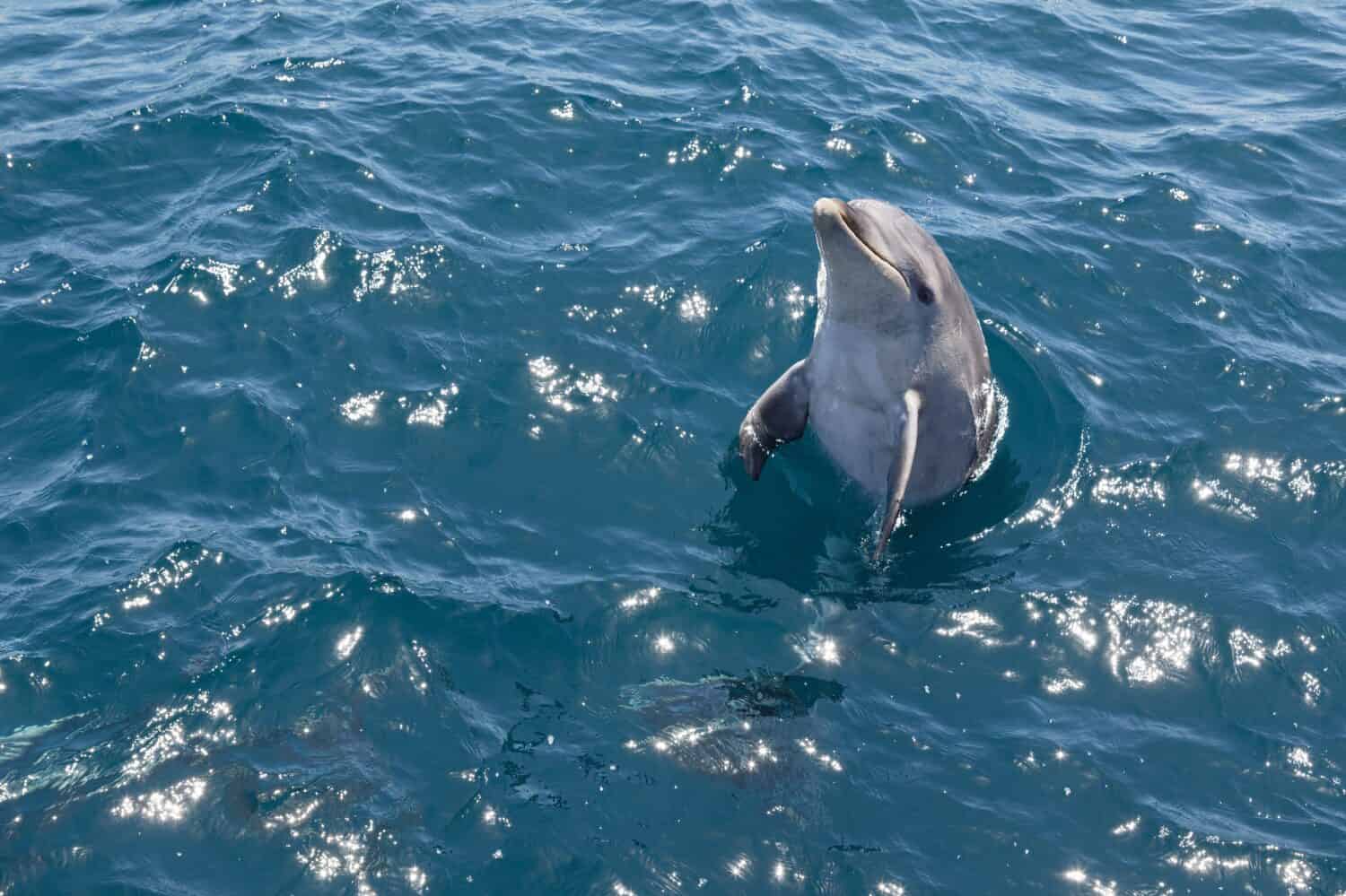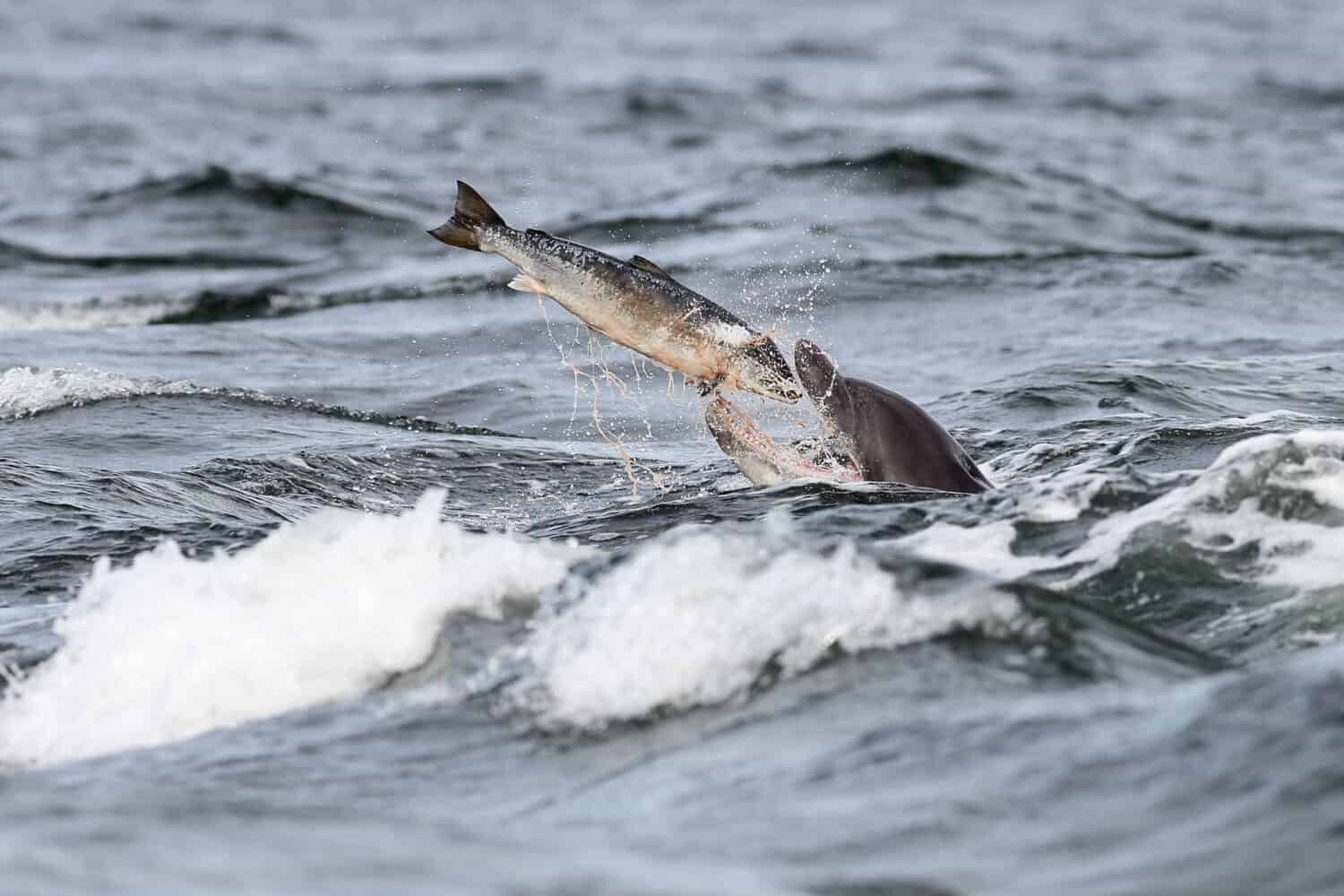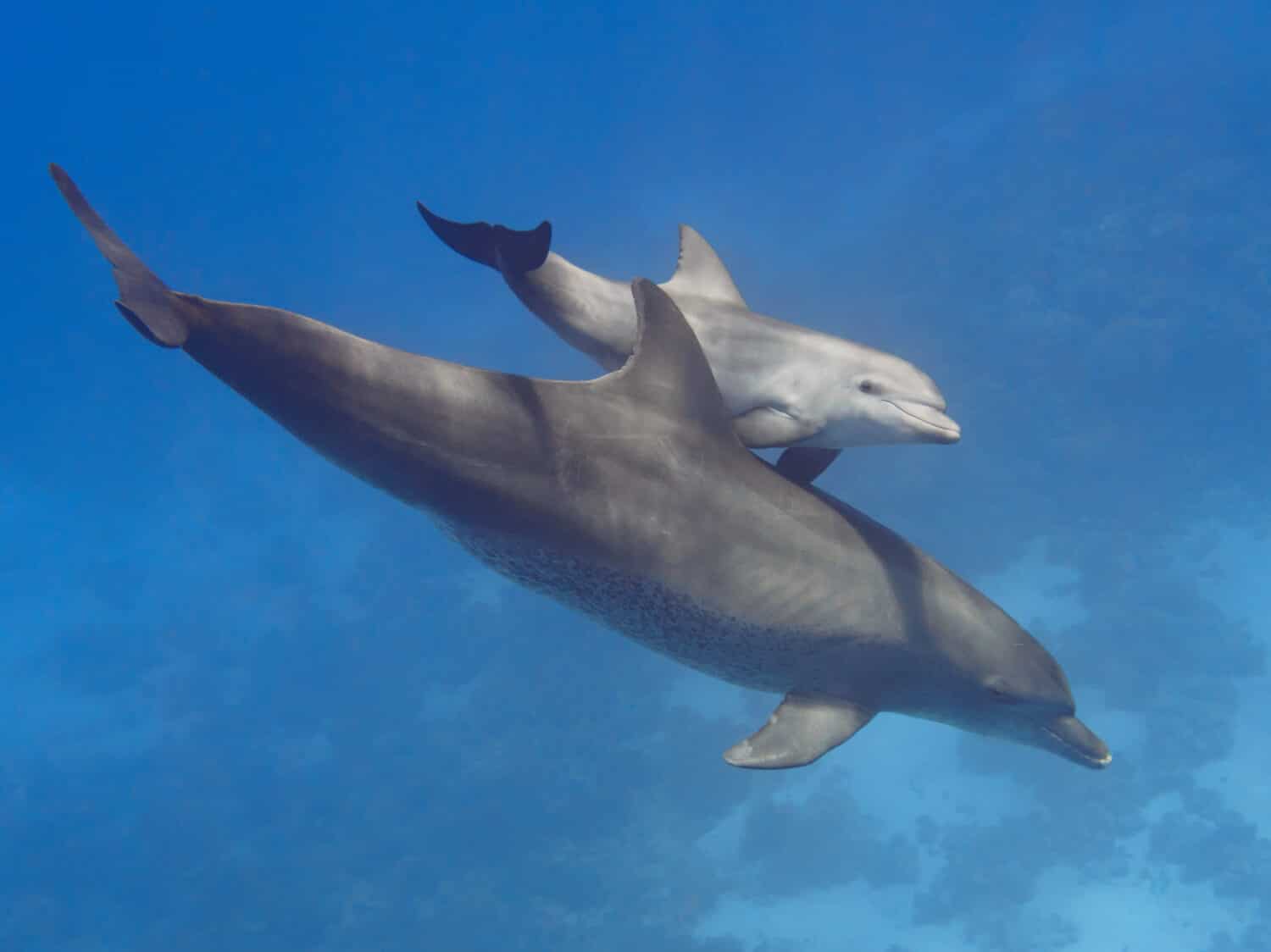When people think about Florida, they may not realize that the state has its own official saltwater mammal. Instead, they may conjure images of spring break vacations or outrageous news headlines. However, the Sunshine State is actually one of the most biologically diverse in the country. Florida is home to hundreds of species of freshwater fish and land vertebrae, as well as invertebrae, saltwater fish, and marine animals.
One of the most beloved creatures in Florida is the official Florida state saltwater mammal. Tourists and locals alike are delighted when they see these creatures’ fins emerge above the water, and quite a few businesses in Florida are dedicated to watching these fascinating creatures.

Official Florida State Saltwater Mammal — Bottlenose Dolphin
The official Florida state saltwater mammal may cause some confusion. Back in 1975, when the state chose an animal to receive this title, Florida didn’t distinguish between the dolphin and porpoise, although they are not the same creature. The legislature simply named the “porpoise, also commonly known as the dolphin,” as the official saltwater mammal.
The Florida Department of State assumes that both names in the legislature refer to the bottlenose dolphin (Tursiops truncates), a species commonly found along Florida’s Atlantic and Gulf coasts. Notably, true porpoises are actually very different from dolphins and don’t typically live in Florida’s coastal waters.
Appearance
Dolphins differ from porpoises in that they have more elongated beaks, bigger mouths, and longer, leaner bodies. They also have more curved dorsal fins — an exciting sight for dolphin watchers.
Bottlenose dolphins are named after their short, thick snout. They are typically blue-gray in color on top and lighter gray or almost white on their bellies. Newborn baby dolphins are darker in color and gradually lighten over time. Interestingly, dolphins living closer to the shore are often smaller and lighter colored.

Bottlenose dolphins get their name from their short, thick snout.
©Paleokastritsa/Shutterstock.com
Behavior
Bottlenose dolphins travel both alone and in groups. Commonly, dolphins who live closer to the shore travel in smaller groups, while offshore dolphins form larger groups. Bottlenose dolphins may break away from their groups and reform them later.
The Florida Fish and Wildlife Conservation Commission lists three classic sounds these creatures use to communicate: clicks, squawks, and pure tones. Dolphins also engage in social behavior such as playing, aggression, and gentle body contact, such as rubbing.
Bottlenose dolphins in particular can cooperate with each other in fascinating ways. They often take turns feeding according to size, age, and health.
Dolphins may also support their sick or elderly group members by keeping them afloat in the water. They even seem to form close friendships. Two males of the same age have been known to pair together for life, spending their time together and helping each other find food and mates.
Habitat
Bottlenose dolphins live in temperate and tropical waters worldwide. They make their homes in a variety of habitats, including harbors, bays, gulfs, and estuaries. Bottlenose dolphins may also live in coastal waters near the shore, deeper waters over the continental shelf, and in the open ocean.
Diet
Bottlenose dolphins are apex ocean predators and eat many varieties of fish, squid, and crustaceans. A dolphin’s diet also depends on what is available where they live.
Seaworld breaks down these creatures’ preferences based on their location: Coastal dolphins tend to eat fish and benthic (or bottom-dwelling) invertebrates; Offshore dolphins usually eat fish and squid, and some evidence suggests they dive more than 1,600 ft. to find prey such as deep-sea fish.
Bottlenose dolphins often team up to catch prey. They sometimes use tactics such as herding fish into a small dense group and taking turns swimming through the mass to feed.
Dolphins do not chew their food. Instead, they swallow their prey whole, breaking fish into smaller pieces if necessary. They also swallow fish head first to ensure that the spines don’t get stuck in or damage their throats.

Dolphins eat fish, squid, and crustaceans.
©Binson Calfort/Shutterstock.com
Pregnancy, Gestation, and Lifespan
Bottlenose dolphin pregnancies last around 12 months. Dolphins typically give birth to a single baby (tail first to avoid drowning!). Pregnant and nursing dolphins may need to eat up to 8% of their body weight every day. That’s around double a typical dolphin’s 4-6%.
Since there isn’t much room in a dolphin’s uterus, the tail fluke and dorsal are cartilaginous and folded over to make birth easier.
Bottlenose dolphins have a lifespan of at least 40 years in the wild, and some females even reach 60 years of age or more. They generally reach sexual maturity and begin to reproduce between ages 5-15 years.
Young
A baby dolphin is called a calf. After the calves are born, they nurse for around 20 months and typically stay with their mothers for 3-6 years. According to the Dolphin Research Center, baby dolphins swim next to their mother in the “echelon position.” This allows them to catch their mother’s slipstream, making it easier to keep up with her.
Baby dolphins are born with lighter-colored “fetal bands” along their midsection. These bands are from being scrunched up inside their mother and generally slough off after a few weeks. Newborns are also generally darker in color, which may help camouflage them as they travel in their mother’s shadow.

Baby bottlenose dolphins swim close to their mother’s side.
©vkilikov/Shutterstock.com
Human Interactions
It’s no small wonder that the dolphin earned the honor of the Florida state saltwater mammal. Bottlenose dolphins are a common sight in Florida coastal waters, delighting tourists and locals alike.
However, human interactions can often cause problems for dolphins. One significant threat to bottlenose dolphins is getting caught in commercial fishing gear. Dolphins may also ingest fishing gear, causing serious injury or death.
While dolphins are an exciting site, human interaction generally isn’t good for them. The NOAA Fisheries states the following:
“Feeding and attempting to feed dolphins is not only illegal under the implementing regulations of the MMPA but is harmful because it changes their behaviors and reduces their wariness of people and vessels.” This puts dolphins at a greater risk for vessel strikes or fishing gear ingestion or entanglements.
While dolphins are not generally aggressive toward humans, it’s important to remember that they are apex ocean predators. Swimming with dolphins is not safe for humans or healthy for the dolphins. Additionally, dolphins may bite or cause worse harm when they are angry, frustrated, or afraid.
For this reason, the best way to observe dolphins is from the safety of the shore or a dolphin watch operation that follows a responsible code of conduct. To learn more about responsible dolphin viewing, review NOAA’s guidelines, here.
Conservation Status
Under the MMPA (Marine Mammal Protection Act), bottlenose dolphins are protected. As we’ve previously discussed, threats to dolphins include interactions with fishing gear, habitat destruction and degradation, biotoxins, and harmful human interactions. The IUCN Red Lists labels the common bottlenose dolphin as “least concern.”
Fun Facts
- Female dolphins as old as 45 years have been known to give birth.
- Baby dolphins are called “calves.” Female dolphins are called “cows” and male dolphins are called “bulls.” A group of dolphins is known as a “pod.”
- Bottlenose dolphins can swim at speeds of up to 22 miles per hour and may dive as deep as 1,600 ft. to catch prey
- Dolphin’s skin constantly flakes and peels off and is replaced with new skin cells. In fact, bottlenose dolphins replace their outermost layer of skin around every two hours.
- For centuries sailors and fishermen considered seeing a dolphin swimming with their ship as a sign of good luck.
Thank you for reading! Have some feedback for us? Contact the AZ Animals editorial team.








